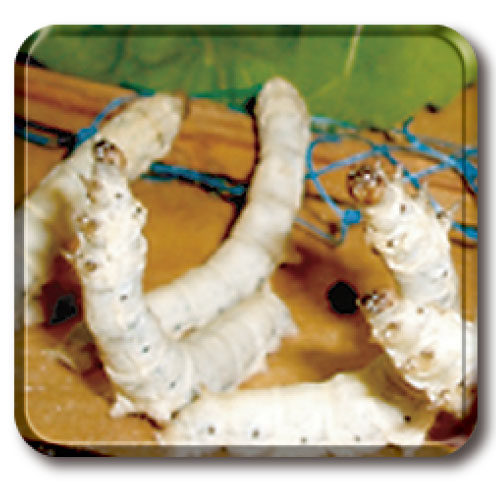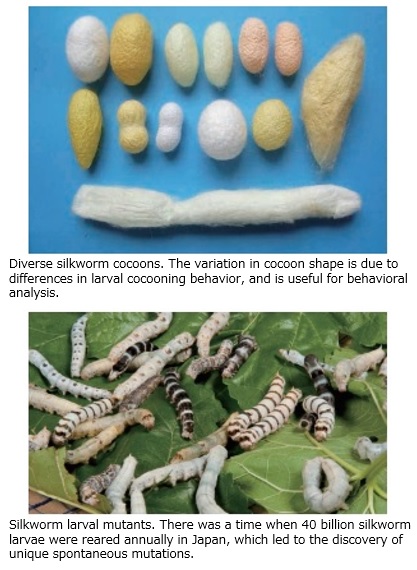
- Core Center:Graduate School of Agriculture, Kyushu University
- Principal Investigator:Tsuguru Fujii
- FAX:+81-92-802-4822
- Sub-Core Center 1:Faculty of Textile Science and Technology, Shinshu University
概要Overview
 Silkworms are easy to rear, have a short generation time of approximately 50 days and are amenable to genome editing. Females can lay 500 eggs in one night, all of which are genetically uniform. The NBRP is home to the world’s most diverse selection of silkworm mutations. We have also developed cryopreservation techniques for ovaries and sperm to facilitate the preservation of genome-edited lines.
Silkworms are easy to rear, have a short generation time of approximately 50 days and are amenable to genome editing. Females can lay 500 eggs in one night, all of which are genetically uniform. The NBRP is home to the world’s most diverse selection of silkworm mutations. We have also developed cryopreservation techniques for ovaries and sperm to facilitate the preservation of genome-edited lines.
Stock
・Genetic mutation lines (mostly spontaneous mutations): about 500 lines
・Consomic and congenic lines with wild-type arachnids: about 200 lines
・Genome-engineered lines: about 150 lines
・Wild silkworm species: 11 species
・Cultured cell lines: 3 strains (to be expanded)
Subjects in the NBRP programs related to “Silkworms”
【 Value addition subprogram/ Genome Information Upgrading Program 】
| FY2018 | Genome re-sequencing of large body-sized strains of the silkworms suitable for pharmacological, physiological and pathological studies (in Japanese) |
| FY2016 | Genome Re-sequencing of Diverse Strains of Bombyx mori and B. mandarina (2) |
| FY2015 | Genome Re-sequencing of Diverse Strains of Bombyx mori and B. mandarina |
| FY2006 | Genome Information Upgrading Program : FY2002-FY2006 |
【 Technology development subprogram/ Fundamental Technology Upgrading Program 】
| FY2024 | カイコバイオリソースの収集・保存・提供 (in Japanese) |
| FY2018-FY2019 | Development of new cryopreservation methods for silkworm and wild silkworm (in Japanese) |
| FY2014 | Development of cryopreservation methods of the silkworm |
